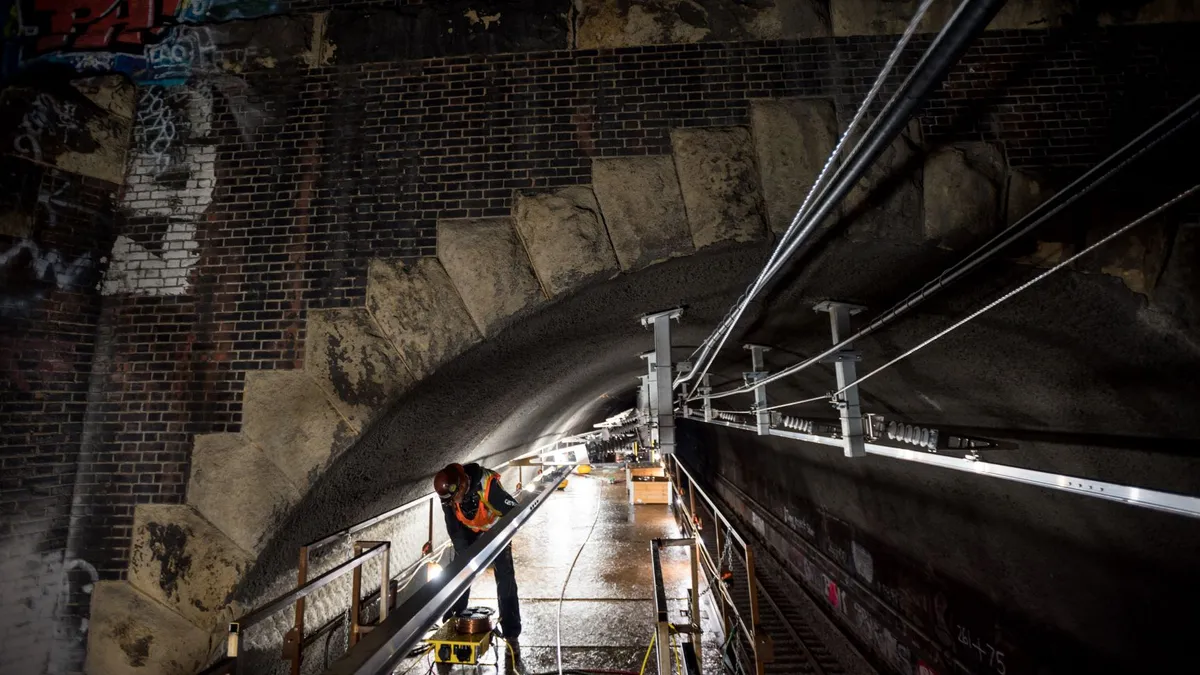Dive Brief:
- The Federal Transit Administration committed $3.4 billion toward the construction of a 2.2 mile extension of the Caltrain commuter rail line into downtown San Francisco, the Transbay Joint Powers Authority announced May 20. The funds are subject to signing of a full funding grant agreement in 2025.
- Caltrain currently operates between San Francisco and Gilroy, California, a community roughly 85 miles southeast of the city. The extension will take trains further north into San Francisco to the multimodal Salesforce Transit Center, which serves transit and intercity buses.
- The California high-speed rail project, currently under construction in the state’s Central Valley, will also use the Caltrain line and extension to reach its terminus in San Francisco if funds become available. The California High-Speed Rail Authority estimates the capital cost of the Northern California connection at between $21 billion and $35.5 billion, per the Authority’s 2024 business plan.
Dive Insight:
The Transit Center opened in 2018 and includes a two-level train station beneath the Center, currently unused since there is no rail access. The extension, called the Portal, “will unlock and unite Bay Area rail connections from the South Bay to San Francisco, by bringing Caltrain all the way to the heart of our downtown, all while laying the groundwork to bring High Speed Rail to the heart of our city,” said San Francisco Mayor London Breed in a statement.
In April, the FTA approved moving the project to the engineering phase, with revenue operations to begin in 2035. In addition to the $3.4 billion federal capital investment grant, the White House also asked for a $500 million appropriation for the project in its fiscal year 2025 budget request. The total cost of the project is pegged at $8.25 billion, per the FTA. Local, regional, state and other federal funds will be needed to complete financing for the project.
Caltrain is in the final stages of electrifying 51 miles of its line from the Tamien station in San Jose, California, to San Francisco, a project that began construction in 2017. New electric trains are on the property and in testing, with a planned service launch in September. “With Caltrain service going fully electric this fall, we are all aboard to better connect our communities with clean, safe, and sustainable transit,” said Jeff Gee, chair of the TJPA board of directors, in a statement.












